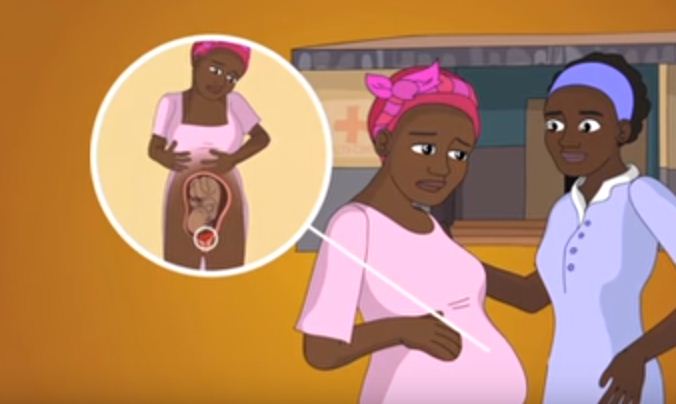Danger signs in pregnancy and how to manage them: In pregnancy, the health of the baby depends entirely on the mother. Many signs or conditions that may be harmless in normal life can be dangerous in pregnancy. It is therefore important for pregnant mothers to be keen and take these signs seriously to minimize risks and complications that may be associated with them. A mother having any of the signs listed below should seek medical attention immediately.

- Vaginal bleeding
Vaginal bleeding is common in the first trimester but may not be a sign of any serious condition. Bleeding occurring in the second and third trimester of pregnancy is however considered very dangerous and may be a sign of serious complications. Vaginal bleeding in pregnancy may be a sign of miscarriage, ectopic pregnancy, placental abruption (placenta detaching from the uterine wall), placenta previa (low lying placenta) or Preterm labour.
- Fits/seizures
Fits/seizures, or better known as convulsions, that occur in pregnancy may be a sign of a life threatening condition known as eclampsia. Eclampsia is a dangerous condition to both the mother and the unborn baby being one of the leading causes of maternal deaths worldwide. It is usually characterized by high blood pressure, proteinuria and convulsions. This condition can be managed in most hospitals offering maternity services therefore any pregnant mother experiencing fits of any kind should be rushed to hospital.
- Severe abdominal pain
Occasional abdominal pain is common and usually harmless caused stretching of the round ligament as the uterus expands, Braxton hicks’ contractions and/or bloating. However, severe and persistent abdominal pain may be a sign of a serious problem such as ectopic pregnancy, miscarriage, preterm labor and urinary tract infections.
- Paleness
Paleness is a universal sign of anaemia a condition where the body does not have enough red blood cells. In pregnancy the body produces more red blood cells to meet the oxygen demands for both the baby and the mother. Mild forms of anaemia are common and harmless in pregnancy. Severe anemia is, however, potentially dangerous to both the mother and the baby. It can lead to pre-term labour, low-birth weight babies and excessive bleeding during and after delivery.
- Fever
Fever is particularly dangerous in pregnancy because it interferes with the normal development of the baby. This is because the development of the baby’s organs is controlled by proteins which can only work within normal ranges of body temperature. Prolonged high fevers in pregnant mothers can therefore lead to miscarriage and birth defects. It is therefore advisable for pregnant women to visit the hospital immediately they are running fevers.
- Reduced or no fetal movements
Most pregnant women start feeling their babies moving at around 20 weeks gestation. The frequency and intensity of movement increases as pregnancy progresses. Most mothers are able to learn the pattern and frequency of their baby’s kicks. Reduction or cessation of fetal movements is therefore primarily based on what the mother feels. This may be a sign of premature rupture of membranes, placental abruption, fetal hypoxia or intrauterine fetal death.
Others
- Severe headaches
- Breaking of waters
- Swelling of the face and hands
- Heartburn
Check out the best maternity hospitals in Kenya in this page
[irp]
Do not miss our latest updates on, warning signs and managing dangers in pregnancy. (The author of this articles is a health professional)
Leave a Comment